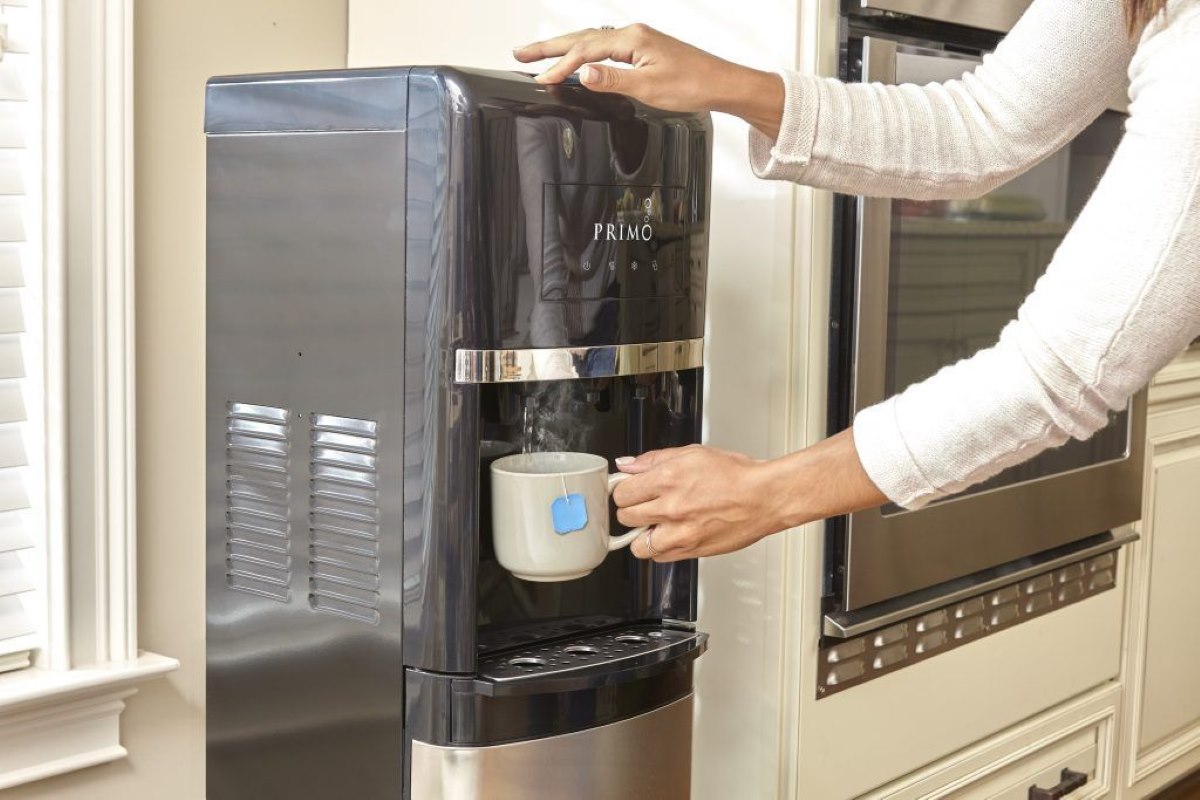

Articles
What Is A Water Dispenser
Modified: August 27, 2024
Learn all about water dispensers in this informative article. Find out what they are, how they work, and the benefits of having one in your home. Read more now!
(Many of the links in this article redirect to a specific reviewed product. Your purchase of these products through affiliate links helps to generate commission for Storables.com, at no extra cost. Learn more)
Introduction
Welcome to the world of water dispensers, where convenience meets hydration. Whether you’re at home, the office, or a public space, having access to clean and refreshing water is a necessity. A water dispenser is a practical solution that provides easy access to drinking water, eliminating the need for traditional water sources like taps or water bottles. In this article, we will delve into the world of water dispensers, exploring their types, features, benefits, maintenance, and factors to consider when choosing one.
Water dispensers have become increasingly popular in recent years due to their convenience and efficiency. They are designed to dispense both hot and cold water on demand, making it convenient for users to enjoy a refreshing drink or make a cup of tea or coffee. Additionally, water dispensers are an eco-friendly alternative to bottled water, reducing plastic waste and promoting sustainable practices.
Whether you’re a busy professional, a health-conscious individual, or a household seeking a reliable water source, a water dispenser can cater to your needs. The varieties of water dispensers available in the market offer different features and functionalities to suit various preferences.
So, let’s dive in and explore the world of water dispensers, understanding their types, benefits, and what factors to consider when selecting one for your home or workplace.
Key Takeaways:
- Water dispensers offer convenience, sustainability, and versatility, providing a reliable source of clean and refreshing drinking water. With various types and features, they cater to diverse preferences and needs, making hydration easy and eco-friendly.
- Regular maintenance and cleaning are crucial for optimal water dispenser performance. From filter replacements to professional servicing, proper care ensures clean, fresh-tasting water and smooth dispenser operation, promoting health and well-being.
Read more: What Is The Best Water Dispenser To Buy
Definition of a Water Dispenser
A water dispenser is a device that provides a convenient way to access drinking water. It is designed to dispense water in different temperatures, typically hot, cold, or room temperature, depending on the model. Water dispensers can be found in various settings, including homes, offices, schools, and public spaces, serving as an efficient and reliable source of hydration.
At its core, a water dispenser consists of a water reservoir or tank, a cooling system, a heating system, and a dispensing mechanism. The water reservoir stores the water, which is then cooled or heated as per the user’s preference. The cooling system typically uses refrigeration technology to chill the water, while the heating system utilizes a heating element or a hot water tank to warm the water.
Water dispensers come in different forms, catering to different needs and preferences. They can be categorized into three main types: bottled water dispensers, bottleless water dispensers, and direct piping water dispensers. Each type has its own unique features and benefits, offering users a range of options to choose from.
Bottled water dispensers are perhaps the most commonly recognized type. They require water bottles to be placed on top of the dispenser, which then feeds the water into the cooling and heating systems. These dispensers are easy to install and can be moved around as needed. They are often seen in homes, offices, and public spaces.
Bottleless water dispensers, also known as point-of-use water dispensers, are directly connected to a water source, such as a tap or a filtration system. They eliminate the need for water bottles and provide a continuous supply of filtered water. These dispensers are commonly found in offices and commercial settings where a large volume of water is required.
Direct piping water dispensers are similar to bottleless dispensers, but they are connected to the building’s plumbing system. They provide a seamless and uninterrupted flow of water, eliminating the need for manual refills or filter changes. These dispensers are typically installed in larger commercial spaces with high water consumption.
Overall, a water dispenser is a convenient and efficient appliance that offers easy access to drinking water. Whether you prefer it hot, cold, or at room temperature, a water dispenser provides a reliable solution to stay hydrated in any environment.
Types of Water Dispensers
Water dispensers come in various types and designs, each offering its unique benefits and features. Understanding the different types can help you choose the one that best suits your needs and preferences. Let’s explore the three main types of water dispensers: bottled water dispensers, bottleless water dispensers, and direct piping water dispensers.
Bottled Water Dispensers
Bottled water dispensers are the most common type of water dispensers found in homes, offices, and public spaces. As the name suggests, these dispensers require water bottles to be placed on top of the dispenser. The water is then fed into the cooling or heating systems, allowing for easy access to hot or cold water.
Bottled water dispensers are known for their versatility and portability. They are easy to install and can be moved around as needed. They come in various sizes, ranging from compact countertop models to larger freestanding units. Some models even offer additional features like built-in filtration systems or ice-making capabilities.
Bottleless Water Dispensers
Bottleless water dispensers, also known as point-of-use water dispensers, are a convenient and eco-friendly alternative to bottled water dispensers. Instead of using water bottles, they are directly connected to a water source, such as a tap or a filtration system. These dispensers provide a continuous supply of filtered water without the need for manual bottle replacements.
Bottleless water dispensers are commonly found in offices, commercial settings, and homes that prefer a more sustainable water solution. They eliminate the hassle of ordering and storing bulky water bottles while reducing plastic waste. These dispensers often come with advanced filtration systems, ensuring the water is clean and free from impurities.
Read more: What To Do If Water Dispenser Is Leaking
Direct Piping Water Dispensers
Direct piping water dispensers, also known as plumbed-in or mains-fed water dispensers, are the most advanced type of water dispensers. Instead of relying on external water bottles or tanks, they are directly connected to the building’s plumbing system. This allows for a constant flow of water without the need for manual refills or filter changes.
Direct piping water dispensers are commonly used in larger commercial spaces with high water consumption, such as factories, community centers, and schools. They offer a continuous supply of clean and filtered water, making them convenient for areas where a large amount of water is required on a daily basis.
When choosing a water dispenser, consider factors such as the available space, the desired volume of water, and the availability of a water source. Each type of water dispenser has its own advantages and features, so take the time to evaluate your needs and select the one that best fits your requirements.
Bottled Water Dispensers
Bottled water dispensers are a popular choice for homes, offices, and public spaces. These dispensers are designed to accommodate water bottles, providing a simple and convenient way to access hot or cold water. Let’s dive deeper into the features and benefits of bottled water dispensers.
Features
Bottled water dispensers typically come in two variations: top-loading and bottom-loading. Top-loading dispensers require the water bottle to be placed upside down on the dispenser, while bottom-loading dispensers have a hidden compartment where the bottle is inserted. Both types have their advantages and can be selected based on personal preference.
In addition to the basic functionality of dispensing hot and cold water, many bottled water dispensers offer additional features. Some models have built-in filtration systems to provide cleaner and purer water. Others include a child safety lock to prevent accidental access to hot water. Some dispensers even have a small cooling cabinet for storing cups or other essential items.
Benefits
One of the primary benefits of bottled water dispensers is their portability and flexibility. They can be easily moved around, allowing you to place them wherever you need them most. This is especially convenient for offices or homes with changing layout needs.
Bottled water dispensers also provide a cost-effective solution for smaller households or businesses. Instead of investing in a plumbed-in system, these dispensers only require the purchase of water bottles. This allows users to control their water consumption and expenses more easily.
Furthermore, bottled water dispensers offer the flexibility of choosing different water sources. Users can select various brands or types of water bottles based on their personal preferences and water quality requirements.
Read more: What Is The Best Instant Hot Water Dispenser
Maintenance
To ensure the efficient and hygienic performance of bottled water dispensers, regular maintenance is necessary. Cleaning the dispenser on a routine basis helps prevent the build-up of mold, bacteria, or other impurities. It is recommended to refer to the manufacturer’s guidelines or user manual for specific cleaning instructions.
In terms of changing water bottles, it is important to ensure that the bottles are properly sealed and not tampered with. Regularly inspecting the bottles for any signs of damage or contamination is crucial to maintaining the quality of water.
In summary, bottled water dispensers provide a convenient and flexible way to access hot or cold water. With their portability, cost-effectiveness, and various features, they are a popular choice for homes, offices, and public spaces. However, it is important to regularly clean and maintain these dispensers to ensure the highest standards of water quality and hygienic performance.
Bottleless Water Dispensers
Bottleless water dispensers, also known as point-of-use water dispensers, offer a convenient and environmentally friendly solution for accessing clean and filtered drinking water. Unlike bottled water dispensers, which require water bottles to be replaced, bottleless water dispensers are directly connected to a water source, such as a tap or a filtration system. Let’s explore the features and benefits of bottleless water dispensers.
Features
Bottleless water dispensers typically consist of a filtration system and a dispensing unit. The filtration system is responsible for purifying the water, removing impurities, chemicals, and unwanted tastes or odors. Some bottleless water dispensers use multiple filters, including sediment, carbon, and reverse osmosis filters, to ensure high-quality drinking water.
These dispensers also come in various designs, including countertop and freestanding models. Countertop models are compact and versatile, making them ideal for small kitchens or office spaces. Freestanding models have a larger capacity and can accommodate multiple users simultaneously.
Benefits
The primary benefit of using bottleless water dispensers is the continuous supply of clean and filtered water. By connecting directly to a water source, these dispensers eliminate the need for manual bottle replacements. This not only saves time and effort but also reduces plastic waste, making them an environmentally friendly choice.
Bottleless water dispensers also provide a cost-effective solution, as users do not need to purchase water bottles regularly. Instead, they can simply enjoy the convenience of accessing purified water directly from the dispenser. This can lead to significant cost savings in the long run, especially in environments where a large volume of water is required.
Furthermore, bottleless water dispensers ensure a consistent taste and quality of water. The filtration system removes impurities and improves the overall taste, making the water more enjoyable to drink. Users can also have peace of mind knowing that they are consuming clean and safe water.
Read more: What Is The Best Instant Hot Water Dispenser
Maintenance
Regular maintenance is essential to keep bottleless water dispensers in optimal condition. This includes replacing the filters as recommended by the manufacturer to maintain the filtration system’s effectiveness. It is also important to regularly clean the dispensing unit and ensure that the water source connection is secure.
Consulting the manufacturer’s guidelines or user manual is highly recommended to follow specific maintenance instructions. Additionally, it is advisable to schedule professional servicing if required, to ensure the long-term performance of the dispenser.
All in all, bottleless water dispensers offer a convenient, sustainable, and cost-effective solution for accessing clean and filtered drinking water. With their advanced filtration systems and continuous water supply, they are a popular choice for offices, commercial settings, and environmentally conscious households.
Direct Piping Water Dispensers
Direct piping water dispensers, also known as plumbed-in or mains-fed water dispensers, are advanced and efficient solutions for accessing a constant supply of clean and filtered drinking water. These dispensers are directly connected to the building’s plumbing system, ensuring an uninterrupted flow of water. Let’s explore the features and benefits of direct piping water dispensers.
Features
Direct piping water dispensers consist of a filtering mechanism, a cooling system, and a dispensing unit. The filtering mechanism purifies the water as it flows through the dispenser, removing impurities and contaminants to ensure high-quality drinking water. Some models offer multiple-stage filtration, including activated carbon, sediment, and UV filters, to provide the highest level of water purification.
The cooling system in direct piping water dispensers uses innovative technology, such as compressor cooling or thermoelectric cooling, to ensure that the water is chilled to the desired temperature. Additionally, some dispensers also have hot water functionality, allowing users to enjoy instant hot water for beverages or food preparation.
Benefits
The primary benefit of direct piping water dispensers is the continuous and on-demand supply of fresh and filtered water. Since they are connected to the building’s plumbing system, users do not need to manually refill or replace water bottles or filters. This makes direct piping water dispensers highly convenient and hassle-free, particularly in settings where a large volume of water is required.
Another significant advantage of direct piping water dispensers is the cost-effectiveness they offer. As there is no need to purchase water bottles or replace filters regularly, the cost of maintenance and operation is significantly reduced. This makes direct piping dispensers an economical choice, especially in environments that have high water consumption.
Direct piping water dispensers also promote sustainability by eliminating the use of plastic water bottles. With a direct and continuous water supply, users can hydrate themselves without contributing to plastic waste. This makes them an environmentally friendly choice for businesses and households alike.
Read more: What Is The Best Instant Hot Water Dispenser
Maintenance
While direct piping water dispensers require less maintenance compared to other types, regular servicing is still important. It is crucial to schedule periodic maintenance checks to ensure the dispenser is functioning correctly and the filtration system is clean and effective. Consulting the manufacturer’s recommendations or guidelines will provide specific instructions for maintenance and any necessary filter changes.
Additionally, it is essential to monitor water quality and address any issues promptly. Regularly cleaning and sanitizing the dispensing unit and ensuring proper connections to the plumbing system will help maintain optimal performance and hygiene.
Overall, direct piping water dispensers provide a convenient, cost-effective, and sustainable solution for accessing clean and filtered drinking water. With their continuous water supply and advanced filtration systems, they are a popular choice for larger commercial spaces, schools, and any environment where a constant flow of high-quality water is essential.
Features and Functions of Water Dispensers
Water dispensers offer a range of features and functions that make them versatile and convenient appliances for accessing drinking water. Let’s explore some of the key features and functions that you can find in modern water dispensers.
Temperature Control
One of the primary functions of water dispensers is to provide access to water at different temperatures. Most water dispensers offer hot and cold water options, allowing users to enjoy a refreshing cold drink or a soothing hot beverage. Some advanced models even have a third option for room temperature water, catering to individual preferences.
Filtration Systems
Many water dispensers are equipped with advanced filtration systems to ensure the water is clean and free from impurities. These filtration systems remove contaminants, bacteria, odors, and unwanted tastes, providing users with high-quality drinking water. Some dispensers use multiple stages of filtration, including activated carbon filters, sediment filters, and UV filters, to effectively purify the water.
Read also: 9 Best Water Dispenser for 2025
Volume Control
Water dispensers offer volume control features that allow users to dispense the desired amount of water. This feature is particularly useful when filling different-sized cups, bottles, or containers. Some models even have programmable volume settings, allowing users to customize the amount of water dispensed for specific purposes.
Child Safety Locks
For households or environments with young children, some water dispensers come equipped with child safety locks. These locks prevent accidental access to hot water and provide peace of mind for parents and caregivers.
Cup Holders and Drip Trays
Many water dispensers come with cup holders and drip trays to offer convenience and ensure a clean dispensing area. Cup holders provide a designated place to store cups or mugs, keeping them within reach. Drip trays catch any spills or drips, preventing them from spreading and making it easier to maintain cleanliness.
Energy-saving Modes
Some water dispensers feature energy-saving modes that help conserve electricity when not in use. These modes reduce energy consumption by adjusting the cooling or heating functions, making them more environmentally friendly and cost-effective to operate.
Read more: How To Clean Pur Water Dispenser
LED Displays and Touch Controls
Modern water dispensers often come with LED displays and touch control panels, providing a user-friendly interface for easy operation. The displays show important information, such as water temperature, filter status, and dispensing options. Touch controls offer convenience and precision when selecting the desired settings or adjusting volume.
In summary, water dispensers are equipped with a variety of features and functions that enhance the user experience. From temperature control and filtration systems to child safety locks and energy-saving modes, these features make water dispensers versatile and convenient appliances for accessing clean and refreshing drinking water.
Benefits of Using a Water Dispenser
Water dispensers offer numerous benefits that make them a popular choice for homes, offices, and public spaces. Let’s explore some of the key advantages of using a water dispenser.
Convenience
One of the primary benefits of using a water dispenser is convenience. With a water dispenser, you have instant access to clean and refreshing water at any time. Whether you need a cold drink to quench your thirst or hot water for a cup of tea or coffee, a water dispenser provides easy and convenient hydration options.
Health and Hydration
Staying properly hydrated is crucial for maintaining overall health and well-being. Water dispensers encourage regular water consumption, making it easier for individuals to meet their daily hydration needs. With a water dispenser, you can easily monitor and control your water intake, helping to keep your body properly hydrated throughout the day.
Read more: How To Use Primo Water Dispenser
Saves Money
Investing in a water dispenser can lead to long-term cost savings. Compared to buying bottled water, using a water dispenser eliminates the need for continuous purchases of disposable bottles. This can significantly reduce expenses on packaged water, especially in environments where a large volume of water is consumed regularly.
Sustainability
Water dispensers contribute to sustainability efforts by reducing plastic waste. By filling reusable cups or bottles from a water dispenser, you help minimize the use of single-use plastic bottles. This promotes a more eco-friendly approach to hydration and helps protect the environment from the negative impacts of plastic pollution.
Quality Water
Many water dispensers are equipped with advanced filtration systems, ensuring that the water you consume is clean and free from impurities. These filters remove contaminants, bacteria, and undesirable tastes or odors, providing you with high-quality drinking water. This peace of mind allows you to enjoy water that tastes great and is safe for consumption.
Versatility
Water dispensers offer versatility in temperature options. Whether you prefer hot water for your favorite warm beverages, cold water to quench your thirst on a hot day, or room temperature water for specific purposes, a water dispenser can accommodate these preferences. This versatility ensures that you have the perfect water temperature whenever you need it.
Read more: How To Clean A Vitapur Water Dispenser
Hygienic Solution
Water dispensers provide a hygienic solution for accessing drinking water. They often have features such as drip trays and easy-to-clean surfaces, preventing water spills and making it easier to maintain cleanliness. Additionally, some models feature child safety locks, ensuring that hot water is not accessible to small children.
In summary, using a water dispenser offers numerous benefits, including convenience, health and hydration, cost savings, sustainability, quality water, versatility, and a hygienic solution. Whether for homes, offices, or public spaces, water dispensers provide a practical and efficient way to access clean and refreshing drinking water.
Maintenance and Cleaning of Water Dispensers
Maintenance and regular cleaning are essential to ensure the optimal performance and longevity of water dispensers. Proper maintenance ensures that the water remains clean, tastes fresh, and the dispenser operates smoothly. Let’s explore the key aspects of maintaining and cleaning a water dispenser.
Regular Cleaning
Regular cleaning is crucial to prevent the buildup of impurities, mold, bacteria, and other contaminants in the water dispenser. Here are some cleaning steps to follow:
- Turn off the power and unplug the dispenser before starting the cleaning process.
- Remove the water bottle or disconnect the water supply.
- Empty any remaining water from the reservoir.
- Mix a solution of mild soap or vinegar and warm water.
- Use a sponge or soft cloth soaked in the solution to clean the external surfaces of the dispenser, including the faucet, drip tray, and nozzle.
- Rinse the surfaces with clean water and wipe them dry with a clean cloth.
- If the internal components of the dispenser are accessible, follow the manufacturer’s instructions to clean them properly.
- Replace the water bottle or reconnect the water supply and plug in the dispenser.
- Fill the reservoir with clean water and let it run through the system to ensure any residual cleaning solution is flushed out.
Filter Replacement
Many water dispensers come with filtration systems, and it is important to replace the filters regularly to maintain water quality. Refer to the manufacturer’s instructions on the recommended filter replacement schedule. Typically, filters need to be replaced every 3 to 6 months, but this can vary based on usage and water quality.
Read more: How To Repair Water Dispenser Not Cooling
Preventing Bacterial Growth
To prevent bacterial growth, it is important to ensure that the water dispenser’s water bottle or water source is clean. Rinse and sanitize the water bottle regularly, especially if it is a reusable one. If using a bottled water dispenser, make sure the water bottles are properly sealed and not tampered with.
Periodic Maintenance
Periodic maintenance may be required, depending on the type of dispenser. This may involve tasks such as checking and adjusting temperature settings, unclogging dispenser nozzles if necessary, and inspecting the water lines for any leaks or damages. Follow the specific maintenance instructions provided by the manufacturer for your particular model of water dispenser.
Professional Servicing
Consider scheduling professional servicing for your water dispenser. Professional technicians can perform thorough cleaning, filter replacement, and any necessary repairs or adjustments to ensure the optimal performance and longevity of the dispenser.
By following proper maintenance and cleaning practices, you can ensure that your water dispenser continues to provide clean and refreshing drinking water. Regular cleaning, filter replacement, and professional servicing, when needed, will help maintain the quality and functionality of your water dispenser.
Factors to Consider When Choosing a Water Dispenser
When choosing a water dispenser, there are several important factors to consider to ensure that you select the right option for your specific needs and preferences. Let’s explore the key factors to consider when choosing a water dispenser:
Read more: How To Clean Samsung Water Dispenser
Type of Dispenser
Determine the type of water dispenser that best suits your requirements. Consider whether you prefer a bottled water dispenser, a bottleless water dispenser, or a direct piping water dispenser. Each type has its own advantages and considerations, so choose the one that aligns with your lifestyle, space constraints, and water consumption needs.
Capacity
Consider the capacity of the water dispenser in relation to your usage. Evaluate how much water you anticipate requiring on a daily basis and choose a dispenser with a water reservoir or cooling/hot water tank that can accommodate your needs. Ensure that the dispenser has a sufficient capacity to meet the demands of your household or office, minimizing the need for frequent refills or restocking.
Temperature Options
Determine the desired temperature options for your water dispenser. If you regularly consume hot beverages or prefer chilled water, choose a dispenser that offers both hot and cold water capabilities. Some advanced models also provide a room temperature water option, providing a versatile range of temperature choices to meet individual preferences.
Filtration System
If water quality is a concern in your area, select a water dispenser with an advanced filtration system. Look for dispensers that offer multiple stages of filtration, such as activated carbon filters, sediment filters, or UV filters. This ensures that the water is purified, removing impurities, contaminants, and unpleasant tastes or odors.
Read more: How To Replace Faucet Of Water Dispenser
Design and Space
Consider the design and space requirements of the water dispenser. Evaluate the available space in your kitchen, office, or any other location where you plan to place the dispenser. Determine whether you prefer a compact countertop model or a freestanding unit. Ensure that the design and size of the water dispenser align with your space constraints and aesthetic preferences.
Maintenance and Ease of Use
Assess the maintenance requirements and ease of use of the water dispenser. Look for dispensers that are easy to clean and maintain, with accessible components that can be easily replaced or serviced. Consider whether the dispenser requires regular filter replacements and factor in the associated maintenance costs. Opt for a dispenser that offers user-friendly controls and intuitive operation for seamless daily use.
Brand Reputation and Warranty
Research the reputation of the brand and consider their customer reviews and ratings. Look for a reliable brand with a good track record of quality and customer satisfaction. Additionally, check the warranty offered by the manufacturer. A warranty provides peace of mind and demonstrates the manufacturer’s confidence in their product. Ensure the warranty covers any potential issues that may arise with the dispenser.
By carefully considering these factors, you can make an informed decision when choosing a water dispenser that meets your specific requirements, ensuring a reliable source of clean and refreshing drinking water for your home or workplace.
Conclusion
Water dispensers have become a popular and essential appliance for homes, offices, and public spaces. They offer convenience, versatility, and numerous benefits that make accessing clean and refreshing drinking water easier than ever before.
Whether you choose a bottled water dispenser, a bottleless water dispenser, or a direct piping water dispenser, each type offers its unique features to cater to different preferences and needs. Bottled water dispensers provide portability and flexibility, while bottleless water dispensers offer a sustainable and continuous supply of filtered water. Direct piping water dispensers provide a seamless and uninterrupted flow of water, making them ideal for larger commercial spaces.
The features and functions of water dispensers, such as temperature control, filtration systems, and energy-saving modes, enhance the user experience and promote the consumption of clean and quality water. Additionally, using a water dispenser offers numerous benefits including convenience, health and hydration, cost savings, sustainability, and a reliable source of high-quality drinking water.
To maintain the optimal performance of a water dispenser, regular cleaning and maintenance are essential. Cleaning the dispenser, replacing filters, and scheduling professional servicing when necessary ensures that the water remains clean, tastes fresh, and the dispenser operates smoothly.
When choosing a water dispenser, consider factors such as the type of dispenser, capacity, temperature options, filtration system, design and space requirements, maintenance and ease of use, as well as the brand reputation and warranty. Assessing these factors helps you select a dispenser that suits your specific needs and ensures a reliable source of clean and refreshing drinking water.
In conclusion, water dispensers play a significant role in providing clean and accessible drinking water. Their convenience, versatility, and multitude of benefits make them a worthwhile investment for homes, offices, and public spaces. By choosing the right water dispenser and maintaining it properly, you can enjoy the convenience of staying hydrated with refreshing and high-quality water at your fingertips.
Frequently Asked Questions about What Is A Water Dispenser
Was this page helpful?
At Storables.com, we guarantee accurate and reliable information. Our content, validated by Expert Board Contributors, is crafted following stringent Editorial Policies. We're committed to providing you with well-researched, expert-backed insights for all your informational needs.
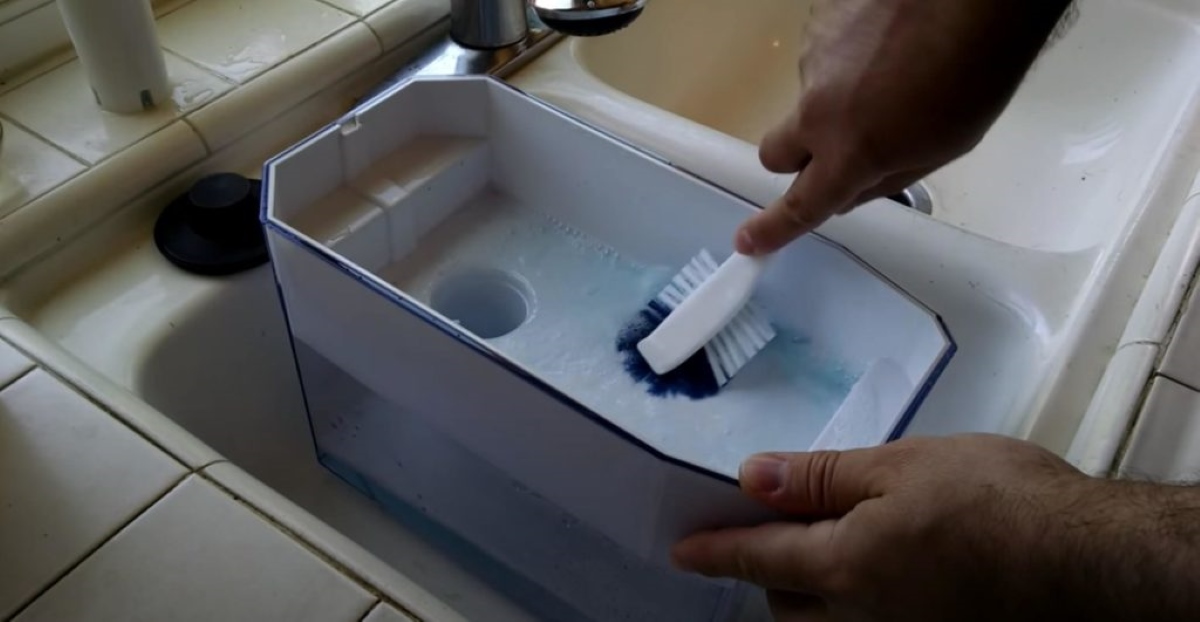
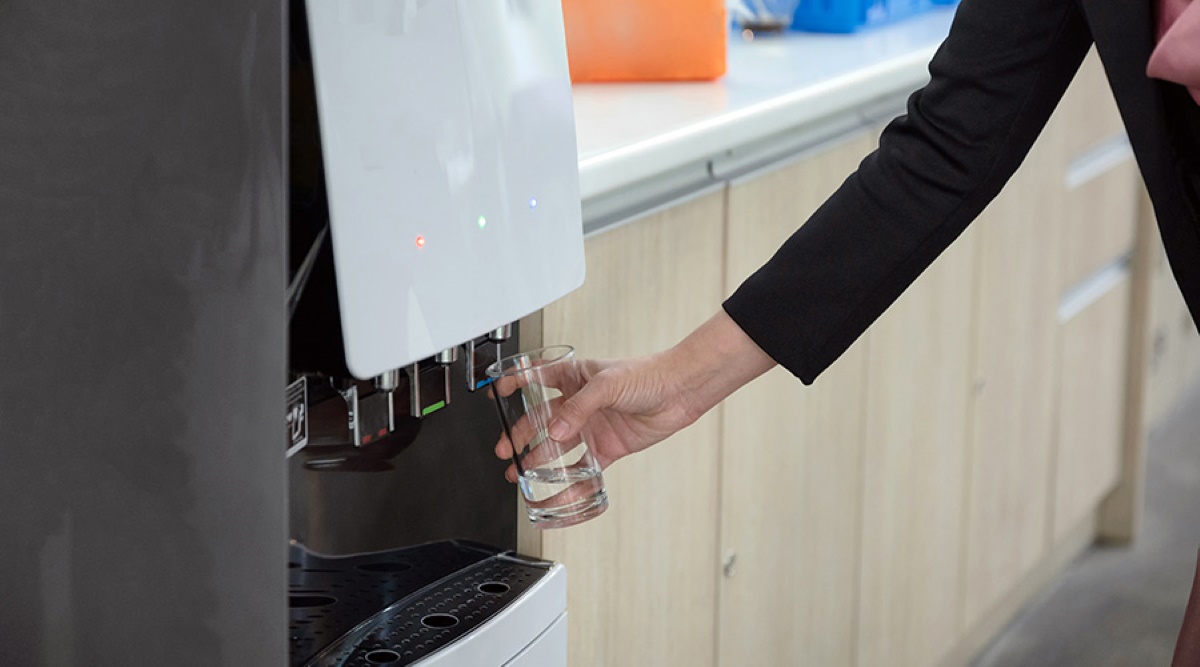
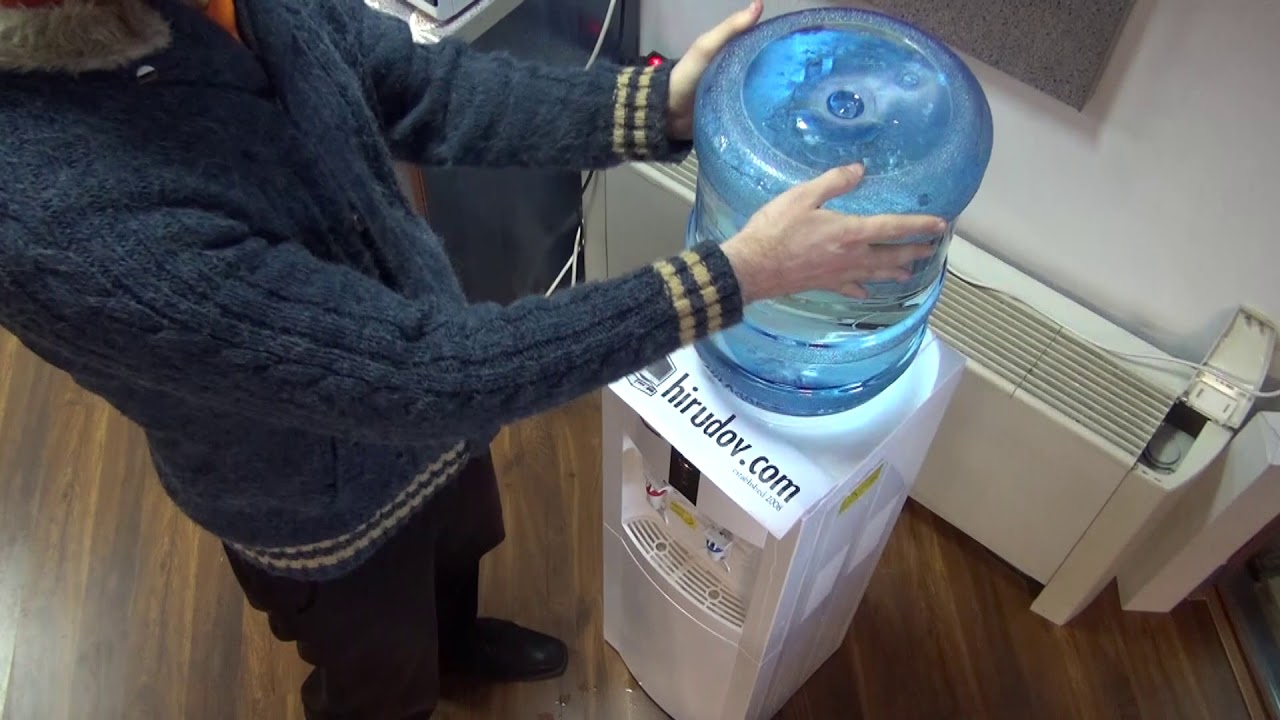
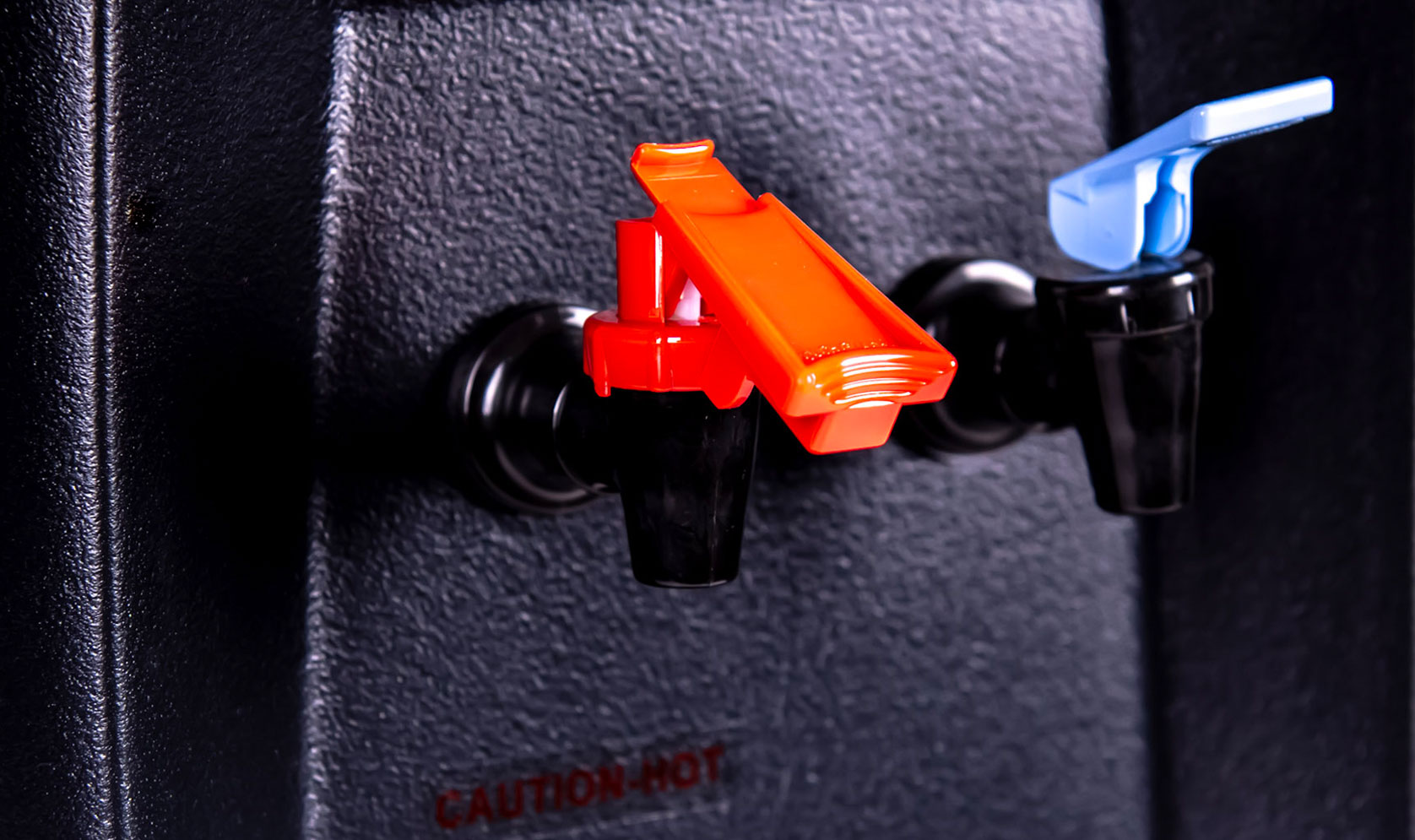

0 thoughts on “What Is A Water Dispenser”